Top 10 places to visit in Beijing
Still flaming hot out of the oven, I love to share here my top 10 places to visit in Beijing, just days after I came back from Beijing! What made me so tempting to do it so fast is because of Beijing’s richness and uniqueness in historical and cultural attractions that made me fell for them so fast! I may have spent 2 to 3 days each to see most of the tourist attractions in Shanghai, Hangzhou, Nanjing and Suzhou 3 years ago, but not for Beijing! I actually spent 7 days in the capital and still haven’t got enough! I hoped I had another 7 days! There are so much more to experience as an avid traveler in Beijing!
Yes. Beijing is such a huge city. Not only it’s the second largest city in China after Shanghai, it was also the seat for more than 20 emperors of ancient China who lived in the city from Yuan, Ming to Qing dynasty from 13th to 20th century, or more than 500 years! In fact, well before that, it was also the capital city for State of Yan during ancient Chinese warring era 200o years ago and then served as an important prefecture during Qin, Han and Tang Dynasty, the first 3 notable dynasties of the united ancient China in between 1st to 10th century. Beijing was also the only capital to have witnessed both the fall of the ancient China and the rise of the current People Republic of China (P.R.C).
Besides these rich and complicated historical background, Beijing is also served as the cultural, political and educational centre of P.R.C today. All these characteristics have made Beijing a tremendous travel destination for any traveler to visit in China, and I’ve just visited Beijing last week! 🙂
There are too many places to visit in Beijing in 7 days for me, but I have at least visited some of the most significant sites in and around the capital. Here are the top 10 travel sites that I think without seeing them in person, no travel to Beijing would be complete. Here they are:
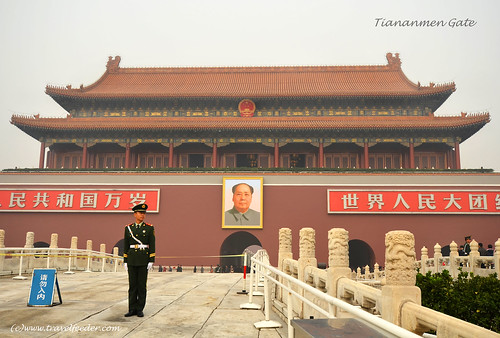
Tiananmen Square. Tiananmen Square (simplified Chinese: 天安门广场) is the 3rd largest city square in the world, measuring 440,00m2 in area. It sits direct in front of Tiananmen gate which separates the large square from the Forbidden city in the middle of Beijing city centre. There is a flag raising and lowering ceremony at dawn and dusk at the north end of the square facing the gate which attracts numbers of tourists everyday. Tiananmen Square is a highly frequented landmark in Beijing for both local and foreign visitors due to its political significance in ancient China as well as modern China with many important events happened here before. Perhaps the most remembered incidence among all was the pro-democracy movement on 4 June 1989 which involved thousands of students, troops of Chinese armies and the death of hundreds of protesters. Visitors to The Palace Museum must go through the Tiananmen Gate where a giant portrait of Chairman Mao Zedong is hung. A photo shot to the gate and its warden in front is a must.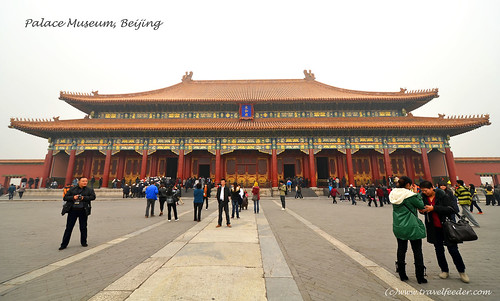
The Forbidden City. The Forbidden City (Chinese:紫禁城) was the Chinese imperial palace since 15th century from the Yongle Emperor of Ming Dynasty to the end of the Qing Dynasty. For almost 500 years, it served as the home of emperors and their households, as well as the ceremonial and political center of Chinese government. The Forbidden City, also known as the Gugong (Chinese: 故宫) now, is the largest palace complex in the world covering an area of over 178 acres. It is where the Palace Museum is. Visitors will need at least half a day to briefly explore by strolling those accessible courtyards, various political and residential buildings, and the imperial garden within the almost 1km² rectangular city wall. The Forbidden City got its name from the fact that no one could enter or leave the palace compound without the emperor’s permission, so the Forbidden City was truly a city by its own. Visiting the Gugong is also for its brilliant architecture and the ancient structural engineering excellence. Once exit from the North Gate, you can climb up the Jingshan hill to have a great overall view of the Forbidden City.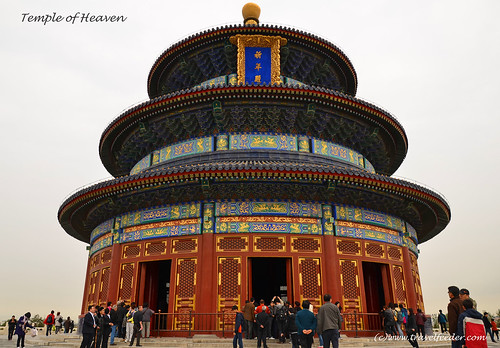
Temple of Heaven. The Temple of Heaven (simplified Chinese: 天坛; Tiāntán) was a Taoist buildings complex constructed in 15th century by the Yongle Emperor of Ming Dynasty. The main structure within the park is The Hall of Prayer for Good Harvests (祈年殿). It was then used by the following emperors of Ming and Qing Dynasty to hold the annual ceremonies of prayer to Heaven for good harvest. The complex covers a huge area of 2.73km² which comprises various buildings and recreational parks, with the intention of the emperor to have it larger than the Forbidden City since the Temple of Heaven is the residence for the heavenly gods while Forbidden City is for the son of the heaven (Chinese: 天子; tianzi). It is located 3km south of the Forbidden City and is easily accessible by Line 5 of Beijing Subway, 5 stops from Tiananmen Gate. After visiting the Temple of Heaven, you may as well try the famous Beijing Roast Duck dish at Bianyifang restaurant along Tiantandong street.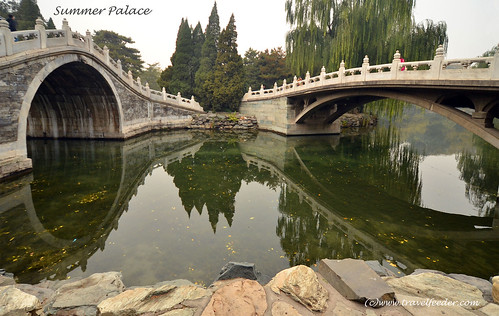
Summer Palace. As its name suggests, Summer Palace (simplified Chinese: 颐和园; Yíhé Yuán) was the resort palace for the emperors and empresses of Qing Dynasty during summer. The Qianlong Emperor of the Qing Dynasty (1644–1911), who started the idea and commissioned the construction work of this imperial gardens since 1749. The Summer Palace is mainly dominated by Longevity Hill (60 meters high) and the Kunming Lake, covering an area of 2.9 km², three quarters of which is water. The central Kunming Lake was entirely man made and the excavated soil was used to build Longevity Hill. The general layout of this imperial garden is believed to have been copied from what found in West Lake of Hangzhou, where the Qianlong Emperor fell in love and visited number of times. A number of various palaces, gardens, and other imperial style architectural structures were constructed in the garden, which also included reproduction of other towers and pagodas found in various parts of ancient China. If you have been to West Lake of Hangzhou, you will find identical structures, bridges, landscaping and lakes in Summer Palace. The prominent building in the garden is the Tower of Buddhist Incense (Fo Xiang Ge).
Badaling Great Wall of China. The Great Wall of China (simplified Chinese: 万里长城; Ten Thousand Mile Long Wall) is a series of stone and earthen fortifications in northern China, built originally to protect the northern borders of the Chinese Empire against intrusions by various nomadic groups since the 5th century BC through the 16th century. One of the most famous is the wall built between 220–206 BC by the first Emperor of China, Qin Shi Huang. The majority of the existing wall was built during the Ming Dynasty. The Great Wall stretches 8,851.8 km (5,500.3 mi) from Shanhaiguan in the east, to Lop Lake in the west. The first section of Great Wall that being heavily renovated and opened for public visit is Badaling section, which is also the most accessible stretch of Great Wall from Beijing, with frequent express bus service (No.877, formerly No.919) running to and from Beijing Deshenmen bus station.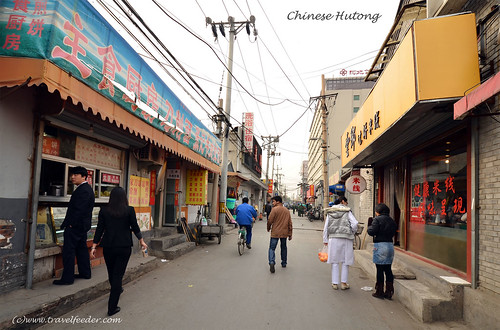
Hutong. In Beijing only, hutongs (simplified Chinese: 胡同) are alleys formed by lines of siheyuan, traditional courtyard residences. Many neighbourhoods were formed by joining one siheyuan to another to form a hutong, and then joining one hutong to another. The word hutong is also used to refer to such neighborhoods in ancient China. Today, many hutongs had given way for new development of modern Beijing, but some hutongs have been designated as protected areas in an attempt to preserve this aspect of Chinese cultural history. One of the most frequented hutong area among tourists is NanLuoGuXiang (simplified Chinese: 南锣鼓巷) where you are find various shops and restaurants. Not far from there is the nightlife district of Houhai as well as Drum Tower.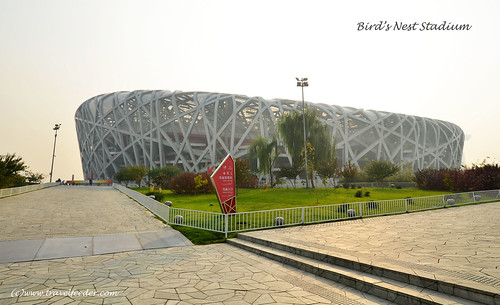
Bird’s Nest. Beijing National Stadium, also known as the Bird’s Nest (simplified Chinese: 鸟巢), is the stadium designed and used for the 2008 Summer Olympics and Paralympics. The stadium was designed by the Swiss architecture firm Herzog & de Meuron in April 2003 after a bidding process that included 13 final submissions. The design, which implemented steel beams in order to hide supports for the retractable roof, gives the stadium the appearance of a “Bird’s nest”. Leading Chinese artist Ai Weiwei was the artistic consultant on the project. Located in the Olympic Green, other outstanding architectures within the park include the “Water Cube” (水立方) swimming complex and National Indoor Stadium. You will need to take a cab or bus there at the time of writing as Beijing Subway Line 8 has ceased operation for renovation until further notice.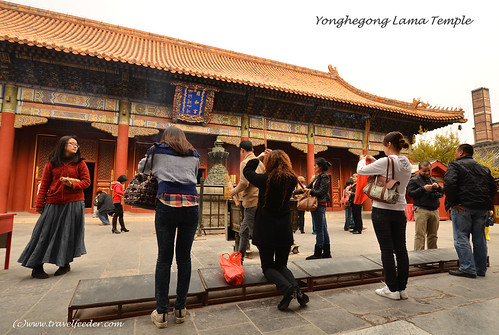
Yonghegong Lama Temple. The Yonghe Temple (Chinese: 雍和宮) , also known as the “Lama Temple”, is a temple and monastery of the Geluk School of Tibetan Buddhism located in the northeastern part of Beijing, which is easily accessible by Subway Line 5. It is one of the largest and most important Tibetan Buddhist monasteries in the world, constructed in 17th century during the Qing Dynasty. It originally served as the court of the Prince Yong (Yin Zhen), who turned to become the Yongzheng Emperor. After Yongzheng’s ascension to the throne in 1722, the building was converted into a lamasery, a monastery for monks of Tibetan Buddhism. After Yongzheng’s death in 1735, his coffin was placed in the temple. Subsequently, the Yonghe Lamasery became the national centre of Lama administration. The temple was constructed in similar design and layout as other imperial palaces with courtyards and various buildings serving different purposes. The prominent features of the Lama temple include the 18 Buddha luóhàn (Chinese: 羅漢) statues and the 26m tall statue of the Maitreya Buddha (Chinese: 彌勒菩薩; Mílè Púsa) carved from a single piece of White Sandalwood. The statue is included in the Guinness Book of Records in 1993. Not far from the temple is another famous Beijing Temple of Confucius.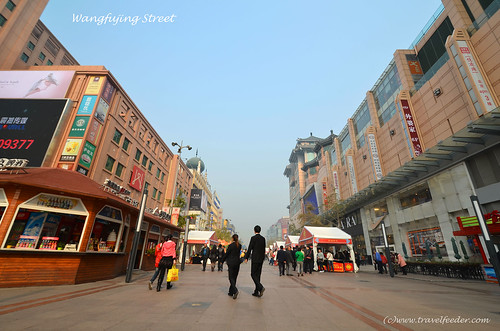
Wangfujing Street. Wangfujing (Chinese: 王府井), located in Dongcheng District, Beijing, not far away from the Forbidden City. It is one of the most famous pedestrian only shopping streets in Beijing with shops selling all sorts of products. It is not rare to see the entire street full of people. The Wangfujing Snack Street, located in hutongs just west of the main street, is densely packed with restaurants and street food stalls. The food stalls serves a wide variety of common and exotic street food. Further north and perpendicular to Wangfujing is Donghuamen Street, which has a night food market of its own. There is also a church on the street which is highly frequented by the local Christians. Wangfujing is considered by many as the Avenue Des Champs Elysees of the east.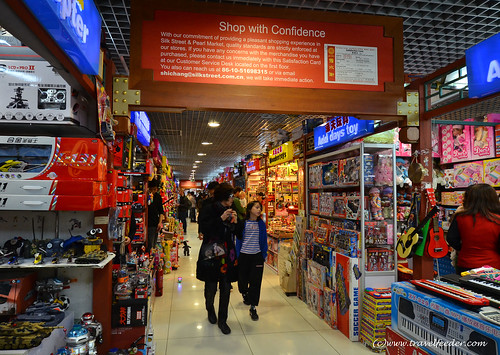
Xiushui Market. Silk Street (Chinese: 秀水街; pinyin: Xiùshuǐjiē) is a shopping center in Beijing that accommodates over 1,700 retail vendors, as opposed to Wangfujing offering upmarket shopping experience, selling wide selection of counterfeit designer brand apparels. The Silk Street attracts approximately 20,000 visitors daily (from 9am to 9pm) on weekdays and between 50,000 and 60,000 on weekends as of 2006. This 35,000-square-meter complex replaced the old alley based Xiushui Market since Year 2005, and has since a popular shopping center especially for Western travelers. Besides the shopping center, more shops and restaurants are also gathered around the area. It is easily reachable by Subway Line 1. The shopping center is located directly above the Yong’ An Li subway station where you get direct access to Level B2 of the shopping mall from the station. While products in Wangfujing are mostly selling at fixed price, you need to bargain really hard with tactics in Xiushuijie market in order to get a good price. Travel Tips: As a common tactic, when the vendor offers you a price, you can first say ‘no’ and turn away to wait for him/her to call you back with a lower offer, then counter offer him/her with 15-20% of the initial asking price. Normally, you will get a good deal by then.
There are many more attractions in Beijing which you can also visit, include Prince Gong’s Palace, Xidan, Qianmen, Drum Tower, Beijing zoo, Ming Emperor tomb and more, if you have more time traveling to Beijing. Besides sightseeing activities in Beijing, you may need more times to explore the vast selection of local foods and snacks throughout the city. Watch this space for more update stories on Beijing 🙂 – Travel Feeder, your ultimate photo travel guide to Asia

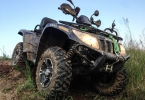

Beijing looks nice, but I prefer the tropical climate in Guangzhou. Plus it’s a great city to wander round.
- November 18, 2011